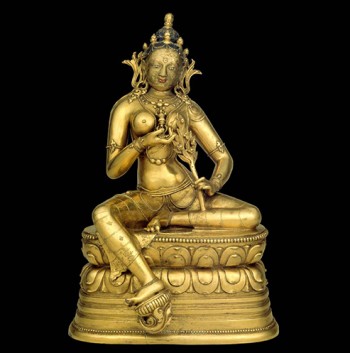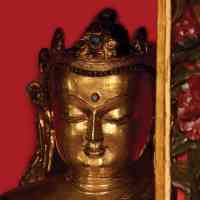
Mindfulness Meditation with Tracy Cochran 01/25/2021
About the Mindfulness Meditation Podcast
Meditation session led by Tracy Cochran.
The guided meditation begins at 11:54.
For centuries Himalayan practitioners have used meditation to quiet the mind, open the heart, calm the nervous system, and increase focus. Now Western scientists, business leaders, and the secular world have embraced meditation as a vital tool for brain health.
Whether you’re a beginner, a dabbler, or a skilled meditator seeking the company of others, join expert teachers in a forty-five-minute weekly program designed to fit into your lunch break. Each session will be inspired by a different work of art from the Rubin Museum’s collection and will include an opening talk, a twenty-minute meditation session, and a closing discussion.
This program is supported in part by the Hemera Foundation with thanks to our presenting partners Sharon Salzberg, the Interdependence Project and Parabola Magazine.


Related Artwork

Theme: Renewal
Marichi, the Goddess of the Dawn, is depicted in many different forms. Sometimes she rides a white horse through the sky, banishing the darkness and driving back the night with the orb of the sun in her outstretched right hand. More commonly she is yellow in color, with three faces and six arms, seated on a chariot drawn by seven pigs, removing all obstacles to happiness and well-being.
This sculpture shows Marichi seated in a relaxed pose. It is part of a three sculpture set with Green Tara in the middle, and Marichi placed on Tara’s right side. A second attendant figure, Ekajati, would complete the three deity composition and be located at Tara’s left side.
The round face, ornamentation and jewelry, patterning on the garments, and multi-level lotus base are all characteristic of Mongolian sculpture from the 17th century. The Tara and Ekajati sculptures that belong with this Marichi are exhibited in the Winter Palace Museum, Ulan Batar, Mongolia. All three sculptures are believed to have been made by the 17th- to 18th-century Mongolian Buddhist teacher and artist Zanabazar (Yeshe Dorje).
About the Speaker

Tracy Cochran is editorial director of Parabola, a quarterly magazine that for forty years has drawn on the world’s cultural and wisdom traditions to explore the questions that all humans share. She has been a student of meditation and spiritual practices for decades and teaches mindfulness meditation and mindful writing at New York Insight Meditation Center and throughout the greater New York area. In addition to Parabola, her writing has appeared in The New York Times, Psychology Today, O Magazine, New York Magazine, the Boston Review, and many other publications and anthologies. For more information please visit tracycochran.org.

